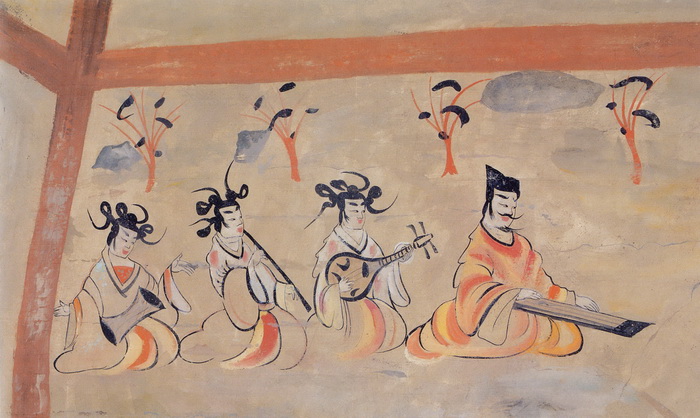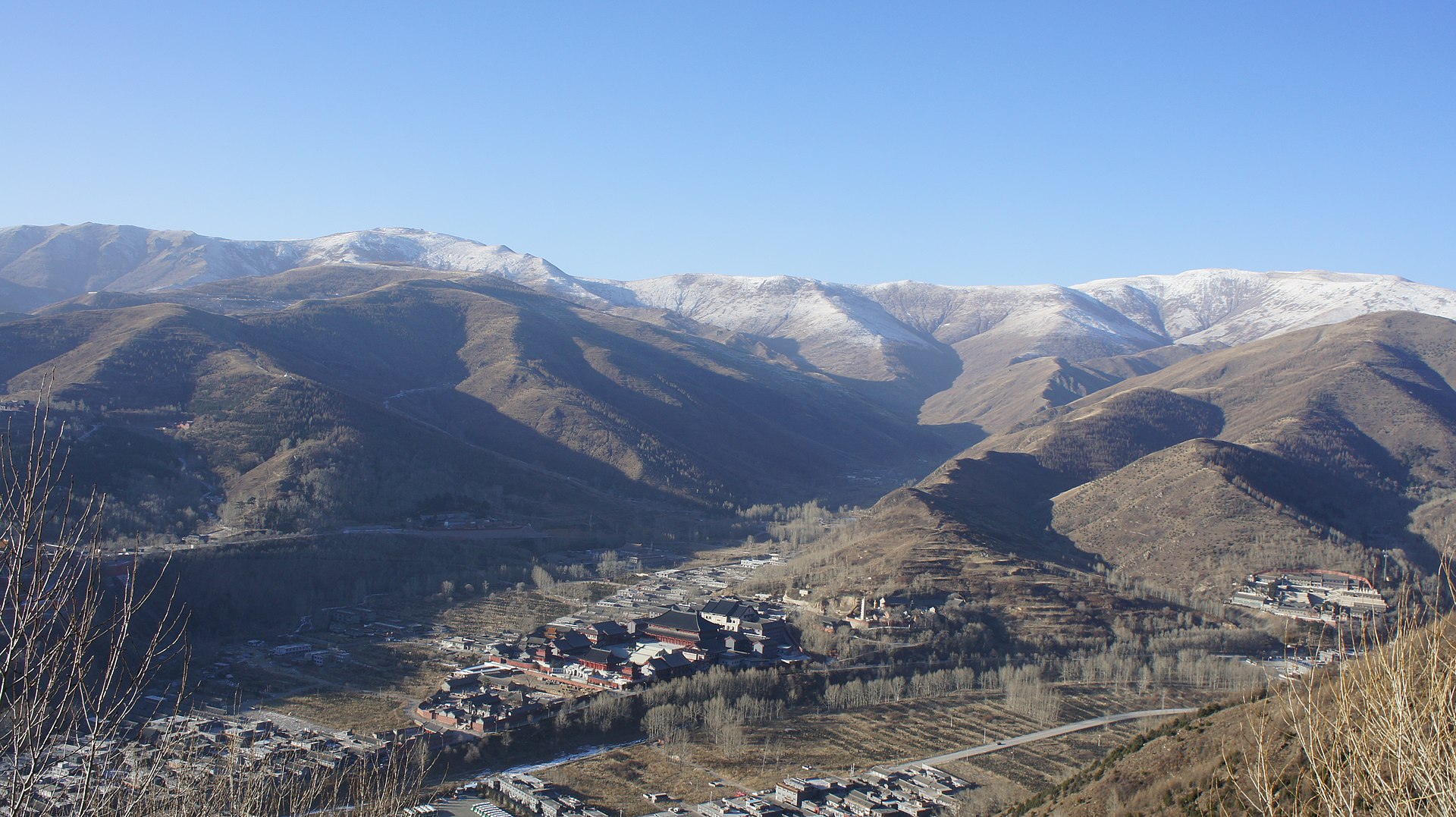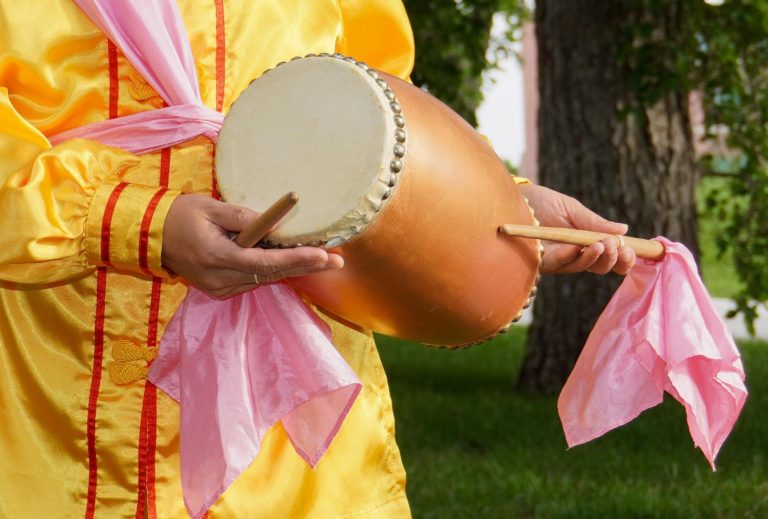Considered the world’s first drum, the Chinese waist drum (腰鼓 Yāogǔ) recalls the glory of ancient Chinese civilization. Dating back over 2,000 years, this simple instrument has served multiple uses throughout history to create an imposing, energetic atmosphere that expresses joy and optimism.
The Chinese waist drum has a fascinating history, with the elements of a typical performance evolving through the eras right up to its righteous revival today.
From battlefield artifact to musical instrument
The Chinese term Yaogu literally means “waist drum,” but it has also been referred to as hugu (胡鼓 húgǔ), meaning “barbarian drum,” or xiyugu (西域鼓 xīyù gǔ), which translates as “drum from the western regions,” in reference to its origin.
The waist drum is said to have originated over 2,240 years ago during the Qin Dynasty, the first dynasty of Imperial China. For centuries, the drums were as essential as weapons in battle, with their effects targeting the spirit of warriors and enemies alike.

Played for one’s own troops, the imposing drums served to boost morale, warn of surprise attacks, and deter enemies. Played after a victorious battle, the drums inspired a sense of pride. The use of drums for military purposes remained prominent into the Han dynasty.
Success
You are now signed up for our newsletter
Success
Check your email to complete sign up
Over time, waist drumming became a folk activity, used for everything from entertainment and warding off evil spirits to praying for good weather and a bountiful harvest – all while maintaining the heroic style and military posture in its performance.

By the Song dynasty (960 to 1279) waist drumming had become so popular that performances were an indispensable element of traditional festivals and celebrations, such as the Lantern Festival and the Chinese New Year.
Waist drum performances: A taste of traditional culture
Waist drum performances are energetic and joyful, incorporating dancing and sometimes jumping, to resemble soldiers in battle. The drum is strapped to the body with a silk sash, and played at the musician’s waist, allowing considerable mobility.
The drum can be struck with the hands or with wooden sticks, which are decorated with silk scarves to accentuate the trajectory traced by the arms’ refined, deliberate movements.
There are two types of waist drum performances: venue yaogu, in which the performers dance and play the drums in a fixed place – such as stages and squares, and road yaogu -– also known as marching drums.
The vibrant nature of the waist drum performances has been associated with the simple and lighthearted character of the Chinese peasants of the northwestern loess plateau, representing the collective spirit of the Shanxi people and their hopeful outlook on life.

Style altered suit the Communist agenda
The agricultural and folkloric nature of the waist drum performance did not escape the Chinese Communist Party’s search for tools to promote its class struggle ideology, especially during the Cultural Revolution. To help create a new culture based on communist ideals, the essence and style of Yaogu were altered, uprooting the art from its traditional foundation.
Like other traditional forms of expression, the waist drum was modified based on the revolutionary literature and art of the time. The ancient warrior style was discarded and the classic attire was replaced with the red and white costume typically seen today. The color red, which Asian cultures have long associated with prosperity and good fortune, came to represent revolution and communism, and has since permeated almost every facet of life in China
Traditional Culture Revived
Falun Dafa, also known as Falun Gong, is a self-cultivation practice based on the universal principles of Truthfulness, Compassion and Tolerance. Rooted in 5,000 years of traditional Chinese culture, this spiritual discipline spread to over 130 countries around the world since being introduced to the public in China in 1992.
Practicing the simple, yet powerful exercises has been prohibited in China since 1999, however, when the Chinese Communist Party launched a persecution intended to eliminate the popular mind/body practice due to its spiritual nature and traditional values.
Undaunted, practitioners in China and around the world work continuously to raise awareness about the persecution. Through peaceful appeals, rallies and parades, they hope to expose the CCP’s misdeeds and revive the traditional, divinely inspired culture of China.
In more than one hundred countries around the world, the Chinese waist drum makes a regular appearance at community festivals and annual parades. Motivated by a desire to share the beauty of authentic Chinese culture, Falun Dafa practitioners give a lively public performance.
Dressed in bright yellow costumes in the style of the ancient Tang Dynasty, they are both eye-catching and uplifting. Yellow – or gold – has been considered the color of heaven since ancient times, and was once reserved for the emperor and the royal family.

“Being one of the oldest musical instruments, waist drums are symbolic of Chinese tradition and culture,” said Jennifer Su, a Chinese waist drum performer living in Calgary, Canada. “I play it to showcase the beauty of traditional Chinese culture through music.”
Speaking about the spiritual use of the waist drum, Su said that its connection to traditional culture inherently implies a connection to the Divine: “[The waist drum] is known for being a part of traditional celebrations. Traditional culture teaches people to follow the right path and have faith.”
“Every drumbeat carries truthfulness, compassion, and tolerance. I want to spread the beauty of Dafa and its blessings to the audience,” said Su. “We will never use violence to approach anything [such as exposing the persecution]. We put others before ourselves and treat everyone with kindness. With compassion, we will touch the hearts of our audience.”













